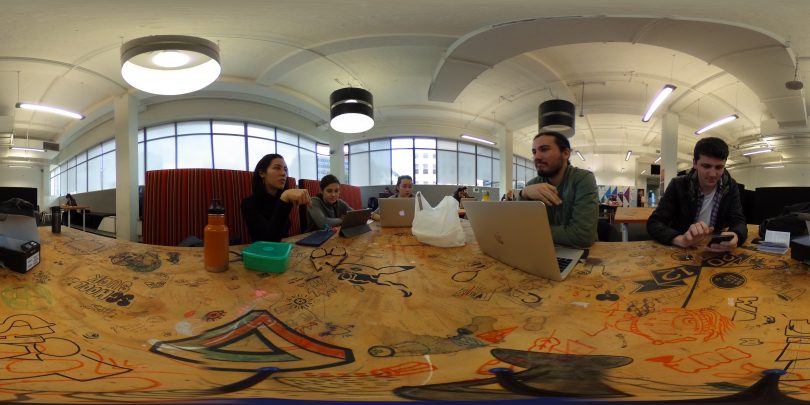Virtual Reality and 360° recording are revolutionising video storytelling.
Since YouTube first launched 360° viewing capabilities in March 2015, news outlets have manipulated the medium to tell stories. The New York Times has been widely regarded as one of the pioneers here, having started their web-series The Daily 360 back in November 2016.
By its nature, 360° recording is completely balanced and objective. Rather than seeing the world through a lens pointed at a chosen subject, we’re able to see everything within the camera’s field of vision. Not only does this nail some core news values; it also allows viewers to completely immerse themselves in the stories being told. As a result, this works well for all kinds of news, from hard-hitting exposés to lighter, feel-good tales.
This first example from the New York Times transports viewers to the top of New York’s World Trade Centre. Depending on the viewer’s fear of heights, this would either make for some beautiful or terrifying viewing. Establishing and closing shots work to full effect here, as panoramic shots of Manhattan by day and night open and close the story. It’s not ‘hard news’, but it doesn’t need to be – it’s a great example of the places 360° video can take viewers.
In terms of journalistic storytelling, though, this harrowing example from the Associated Press is on a whole other level. Viewers are placed on the front lines of the Mosul conflict, witnessing and hearing the effects of car bombs and airstrikes first-hand. We even see the journalist in frame from time to time. Furthermore, text is used within the to translate direct quotes into English, and to convey other important information. The text is usually placed on opposite sides of the 360° view – allowing viewers to see the text no matter where they’re looking at the time. This medium deeply conveys the human element of the conflict; most shockingly, in the final minutes.
Quite literally, the possibilities with this technology are endless. For now, this form of storytelling is still quite niche. However, if and when VR headsets and 360° recording make their way into the mainstream, who knows what could be achieved.



